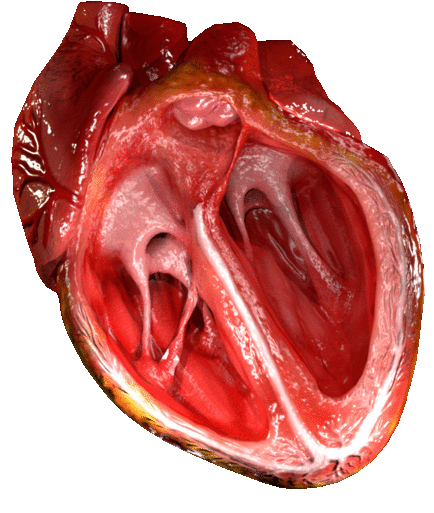Note that your final mark will not be saved in the system.
1.1.b. Cardiovascular system GapFill
You must fill all the gaps before clicking ‘Check Answers!’

The cardiovascular system adapts depending on whether the body is in a resting, exercising or recovery state. This is dictated by the intensity of exercise and the corresponding demand for energy at the working muscles. There are three key values which represent the level of stress placed on the cardiovascular system:
- Heart rate (HR) - The number of times the heart beats per
- Stroke volume (SV) - The amount of blood ejected from the left ventricle of the heart per
- Cardiac output (Q) - The volume of blood ejected from the left ventricle per
Heart rate x =
Let's take a look at how the changes in these values reflect how the cardiovascular system is meeting the demands of rest, exercise and recovery.Resting heart rate is ~70 bpm but is highly individualised. A true reading could be masked by a whole range of factors including caffeine intake, sleep, arousal and anxiety. It is generally the case for a fitter individual to have a resting heart rate, as this is reflective of a stronger heart (cardiac hypertrophy), as well as greater efficiency of oxygen transport in the blood and extraction at the muscle. A resting heart rate of <60 bpm is termed ' '.
- Resting stroke volume is ~70 ml. As we have established that resting heart rate is lower in fitter individuals, it does not then mean to say that less blood is being circulated around the body. There is in fact the same amount of blood being circulated, only the lower heart rate is compensated by a greater stroke volume.
- As we know the rough values for resting heart rate (~70bpm) and stroke volume (~70ml), the resting value for cardiac output must be ~ L. This remains the same at rest and, unlike resting heart rate and stroke volume, is independent of fitness.
- As we exercise the skeletal muscles' demand for oxygenated blood increases, so does heart rate. Heart rate may increase before we start exercise, known as rise. This is followed by a rapid increase in heart rate to meet the body's demand for oxygen, until a steady state is reached when the demand for oxygen is met. This is often illustrated on graphs as a .
- Stroke volume also increases in parallel with exercise intensity, due to an increase in return - the volume of blood returning to the right atria from the body. This causes the ventricular walls to stretch further with the increase in blood volume, which in turn leads to an increased contraction force of the ventricles. This is known as the Frank-Starling mechanism. Stroke volume will also plateau during aerobic exercise.
- As the equation earlier indicates, cardiac output will also increase due to the increase of HR and SV. From rest to high-intensity exercise, this could increase by as much as 30 L, but will plateau during anaerobic exercise.
As soon as exercise ceases, the recovery period will start. Heart rate will suddenly drop and then undergo a more gradual reduction. This will be accompanied by an elevated stroke volume for a period of time in order to maintain cardiac output enough so that any oxygen debt (temporary oxygen shortage) that might have been accrued at the muscle is repaid and waste products are removed.